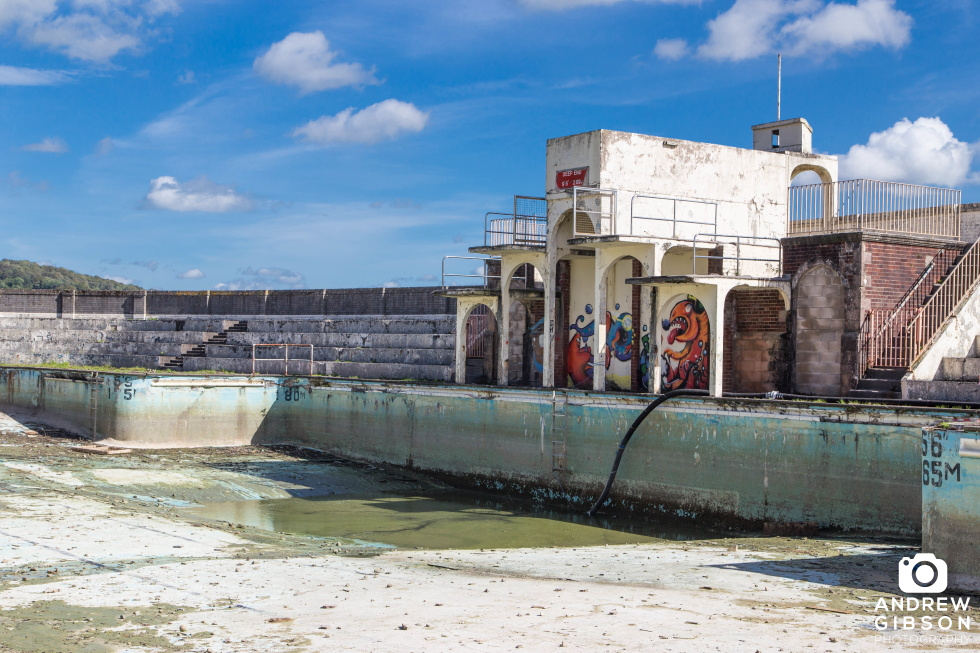One of the things that people seem to enjoy most about my abandoned world photography is the pictures of swimming pools. I’ve often wondered why. I’ve explored derelict hospitals, industry, military installations and power stations – partly for the thrill of it, partly for the photography but always to see something different, off the beaten track, behind closed doors – yet it’s the humble swimming pool that people latch on to. Maybe it’s familiarity that evokes that emotion – everyone can identify with something they’ve used and maybe they have happy childhood memories of doing so. I wondered as much as I arrived at Grange Lido this week for a look behind the hoardings…
By design, Grange Lido is the only building on the seaward side of the town’s Edwardian promenade and its decaying structure stands out all the more for its solitary aspect, an aged beauty queen quietly contemplating former glories and longing for another spell in the limelight. The site was listed in 2011 and since then it’s had some minor grants and a cursory clean up, but the full facelift it needs will cost millions of pounds that South Lakeland District Council simply doesn’t have. And that’s the problem with listed buildings – the listing itself doesn’t provide any money to save those that need it and there’s an equal chance of a descent into ruin through inaction as there is restoration and prosperity.
Quite which way this one will go is anyone’s guess, but as I wrote last time the British public’s holidaying habits have changed a lot since 1932, and seawater-filled outdoor pools are about as out of favour as the bathing beauty parades that once filled them. Lovely though it would be, even without the huge civil engineering work required it’s hard to imagine a relative backwater such as Grange-over-Sands making a viable case for operating the lido as a pool again. It may be the only surviving Art-Deco example in the north, but if there was an economic case then it – and its counterparts – would still be open.
I’ve wandered the promenade here a few times and once put my camera over the fence to take a blind shot inside. Reviewing the LCD screen an old lady began to take an interest… “Is there any water in it?” she asked. It was full, I informed her. “Yes” she responded, with a wry twinkle and more than a little despondency. “They closed it in 1993 because they said it was leaking in to the sea. It’s been full ever since”.
On this occasion though I had special access to the other side of that fence, albeit over-cautiously restricted and in a seriously unflattering hard hat. Given that the interior of the buildings were strictly off-limits you’d be forgiven for wondering what horrors were known to fall from the sky round these parts. No wonder the tourist trade had shrunk – Grange is a bloody dangerous place to be outdoors, it seems. Either that or Chicken Licken had written the two page safety briefing I’d signed to stand on one side of the now drained and deforested complex…
And that, really, is the crux of the lido’s problem: If the authorities feel they have to block you from doing anything for fear of being sued in an increasingly litigious society, you can just imagine the blind panic at the thought of somebody actually using the restored lido for a swim when they might slip in the water. That, sadly, is the world we live in today. Wave goodbye to your happy memories of being responsible for your own actions, adventuring and swimming outdoors in the past – those days aren’t ever coming back…
Thanks to the Morecambe Bay Partnership for arranging access as part of Heritage Open Days 2016. I genuinely hope – as I do with most of our endangered heritage – that a way forward can be found to save it.
